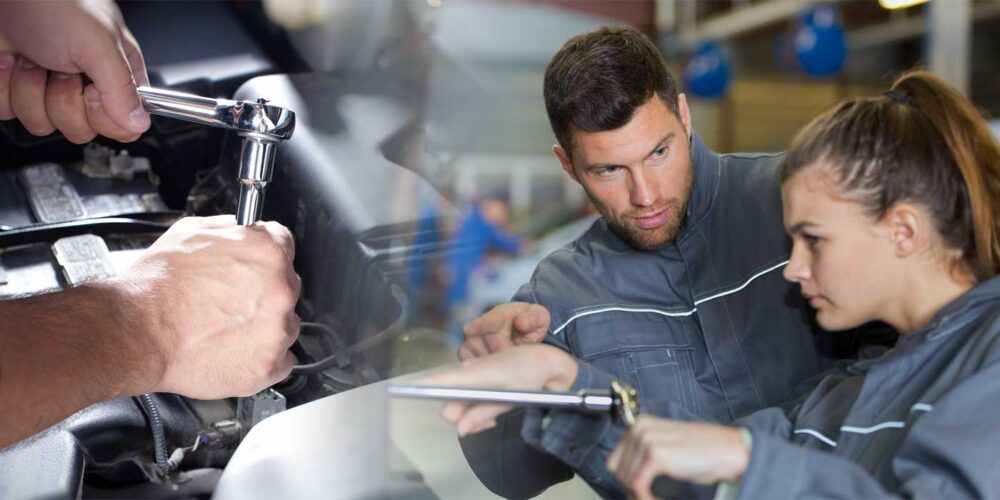I’m betting you have no idea what a PIP is, so answer me this …
1. Are your service operations net profits increasing over last year’s?
2. Is your service absorption improving year over year?
3. Does customer pay owner retention really matter?
4. Do you have an on-going training process for growing top performers?
5. Are your managers leaders or administrators?”
No Means Uh, Oh!
There is a lot to talk about when answering those five questions. The first four call for a simple “yes” or “no” so obviously if you answered “no” to any of the four then you most definitely need a PIP.
So now I’m going to go out on a limb here and answer question number five for you and say “administrators.” My reason for this answer is really simple logic. Your managers are the ones responsible for creating the results that produce the answers to questions one through four.
If your service operations’ net profits are not increasing over last year and service absorption is stagnant with your CSI hovering around “group average” then I can only assume customer pay owner retention really doesn’t matter that much and there is no on-going training process for your service and parts team due to a lack of leadership. This does not mean you have bad or incompetent employees and managers but what it does mean is you need a PIP — now. Yes, a PIP can cure all of the above, so what the heck is a PIP?
PIP, PIP, Hooray!
A PIP is a Profit Improvement Plan. Whether you are a dealer, a general manager, a fixed operations director or a service manager you have to have a plan. This plan must be in writing, it must be specific, it must be attainable and it must have accountability for completion. Sounds simple enough, so how do you build a PIP specifically for your service and parts operations?
Let’s begin with your most recent financial statement along with the same statement for last year and compare the two in order to answer questions one and two. If your net is not increasing, then compare your year over year sales — gross profits — expenses and determine if your sales and gross profits are too low or are your expenses too high or is it both? We have analyzed more than 1,000 dealership financials and what we find most often is dealers are doing a good job controlling expenses but their gross profits are too low.
Key Performance Indicators
If this is the case in your store, then here are some key performance indicators for you to use when looking for your opportunities for improvement in your service operations gross profits: (If you are in a 20 Group then this is already done for you in your composite.)
- Technician Productivity @ 120%
- Labor Margin @ 75% of CP Sales
- Parts Margin @ 42-45% of CP Sales
- Policy Adjustment @ 2% of Total Service Gross Profit
- Service Net Profits @ 20%+ of Gross Profit
- Parts Net Profit @ 30%+ of Gross Profit
- Service Absorption @ 100%
OK, there are some key financial metrics for your use so here are some key performance metrics for your fixed operations management team to use in building your PIP:
- Total Shop Productivity @ 120% (# of flat rate hours produced divided by # of clock hours worked)
- Parts & Labor Gross Profit produced per main shop technician per month @ $17,500
- One-item ROs @ 15% or less
- Service Advisor’s Closing Ratio on Upsells @ 50%
- Multi-point Inspection Completion Rate @ 95%
- Maintenance Menu Presentation Rate @ 80%
Taking the First Steps
Once you have gathered all the information outlined above and determined where your opportunities are for profit improvement you can then move to the next phase of your PIP: Change!
I’m guessing you’ve heard the saying, “If you want something you’ve never had, you have to do something you’ve never done.” Sounds like change is not optional! OK, if you are all in on making some changes you must identify what needs to change and more importantly how you’re going to implement those changes to get the results you deserve.
These changes will obviously have to address what you plan to do to have a positive impact on your out of line conditions as determined with the above exercise. Here is an example:
Your technicians’ productivity is at 70%. Your goal should be 120%.
Plan of Action:
1. Measure each technician’s productivity.
2. Review their productivity with them in one-on-one meetings.
3. Ask each technician the following question: “If there was just one thing, I could do for you to make your job more enjoyable and more productive, what would it be?” (You might be surprised at what you hear!)
4. Install a performance-based compensation plan that rewards all flat rate techs and all hourly paid techs for increasing their productivity above their current levels. In other words, compensate to motivate.
5. Identify any activities that prevent technicians from becoming more productive. Examples: Moving RV inventory-waiting on parts-plowing snow-repairing dealership facilities-cleaning dealership-etc.
When you focus on keeping your technicians productive and provide them with the support they need from management along with the proper equipment needed to be more efficient, you will see your overall shop productivity increasing steadily. Don’t let anyone convince you that 100%+ productivity is not achievable.
Once you have completed the above you will have taken your first step toward implementing your PIP. Get ready for change and prepare yourself to get committed to following your profit improvement plan for a record year in net profit.
Need Help? Just Ask …
If you need any help with designing a performance-based pay plan send me an email at the address above.
Don Reed, DealerPRO














